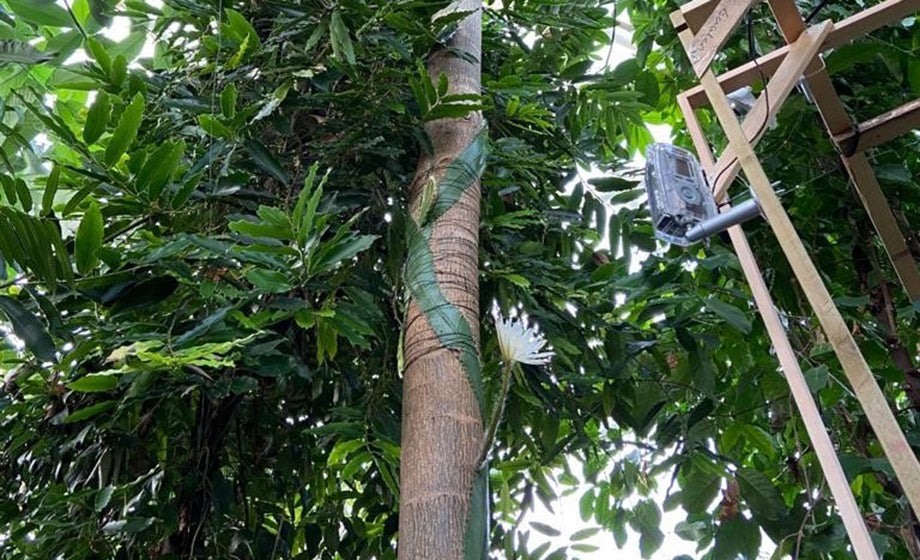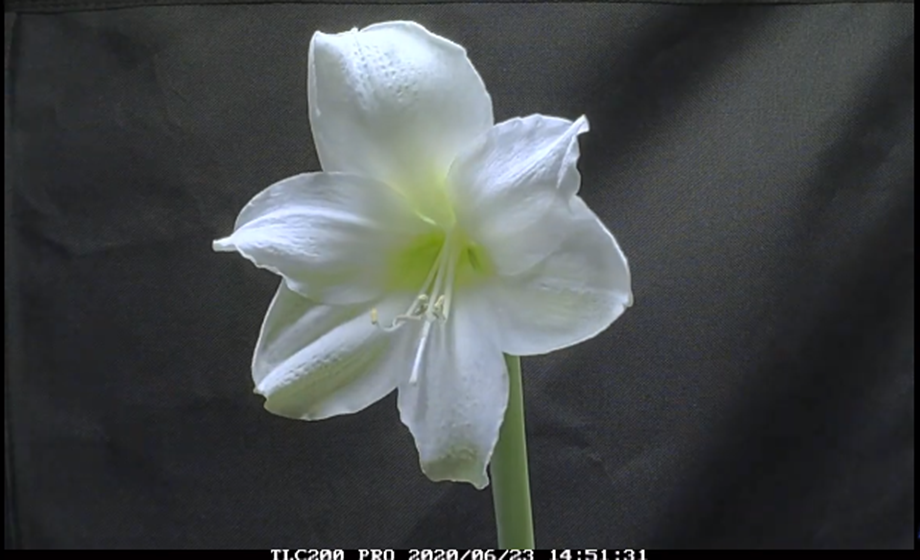A showdown of sorts is happening amongst researchers around the world as each group tries to prove their theories surrounding plant sentience. A recent article published in Scientific Reports provides team sentience with another point and helps map out new study methods using time lapse.
To prove sentience in plants the researchers focused on nutation movements of growing beanstalks. Nutation is how an object rocks or sways on an axis of rotation and this movement was examined under two conditions: beans growing with and without a support pole to grasp onto.
A neat aspect of their study is that it was a collaborative and interdisciplinary approach to plant research. Academics in philosophy, psychology, plant sciences and minimal intelligence from the US, Canada, Spain and Iran all worked together to put out this research.

Experiment footage of bean growing in an environment without a support pole.
We had the pleasure of talking with two researchers from the project, Vicente Raja, from the Rotman Institute of Philosophy at Western University in Canada and Paco Calvo who runs the Minimal Intelligence Lab (MINT Lab) at the University of Murcia in Spain.
I think it’s nice that we are in a point in which we are able to ask questions regarding plant sentience. We don’t really know the answer but being able to ask the question is super cool.
- Vicente Raja
Vicente met Paco while he was an undergraduate at the University of Murcia in Spain and Paco ended up being his MA advisor. It was during this time that he became exposed to the idea of plant behavior and intelligence. After a move to Cincinnati, Vicente picked up a new set of concepts and tools that were only being used to study animal behavior. Bridging the gap between animal and plant sciences, the two researchers decided to apply these tools to their study of plants.
Paco is the Principal Investigator at the MINT Lab and studies plant intelligence using experimental methods including time lapse photography to observe the navigational capacities of plants.
In the late 90s […] I realized that we humans are not that special, and that intelligence and sentience ought to be traced back to the very root of the tree of life.
- Paco Calvo
By using time lapse photography, Paco explained that humans are able to better empathize with plants and see them more as agents and not just resources for us to consume. Because plant behavior and growth are slow paced, without the help of time lapse we can easily become “plant blind” and unable to make sense of the dynamic green world around us.

A controlled-environment chamber at MINT equipped with Brinno TLC200 PRO time lapse cameras. Similar to Pavlov’s experiments with dogs, they are investigating the possibility of associative learning in plants.
Both Vicente and Paco hope that their research provides a deeper understanding of how plants interact within ecosystems so that better frameworks can be developed to address issues such as sustainability and climate change.
We will definitely be keeping our eyes on this constantly evolving research and Paco also let us know that he has a book on plant sentience coming out called Planta Sapiens that will include new discoveries that will knock our socks off!
Brinno is proud to be a part of this revolutionary research, for more information on the TLC200Pro or how Brinno time lapse cameras can be an integral part of your research projects check out our research applications solution page.



